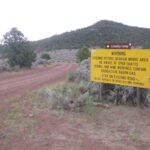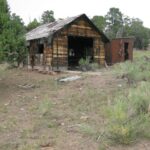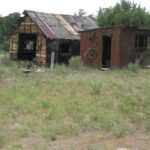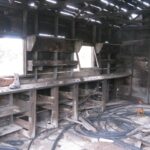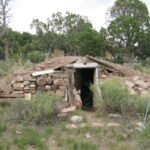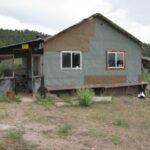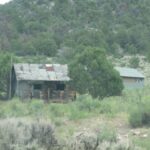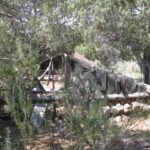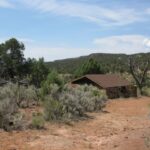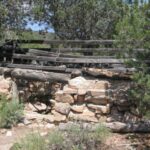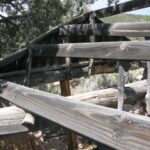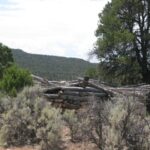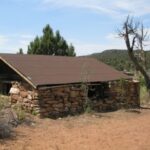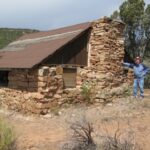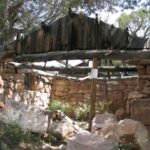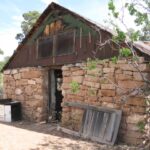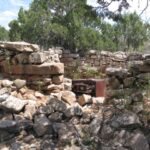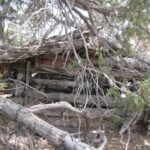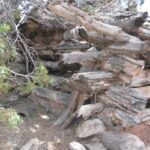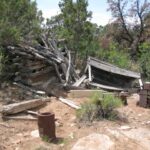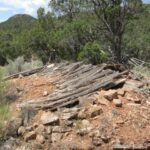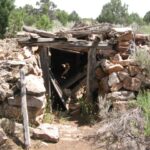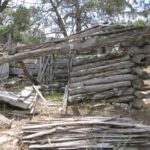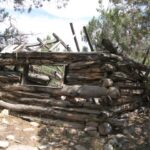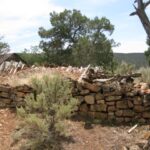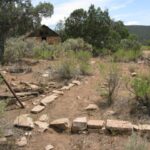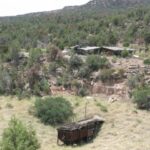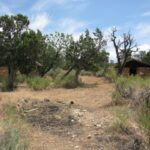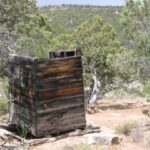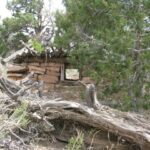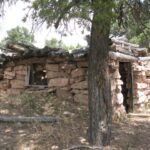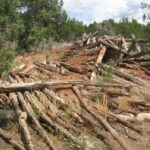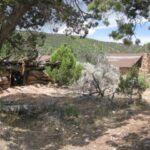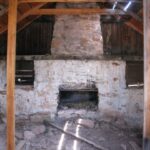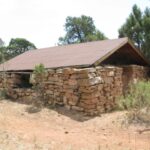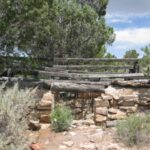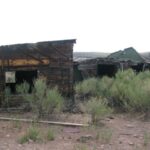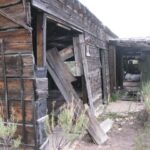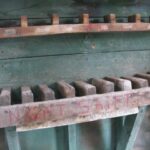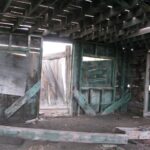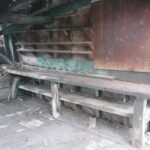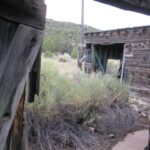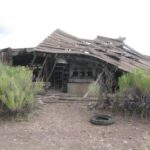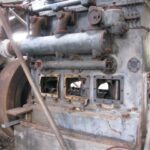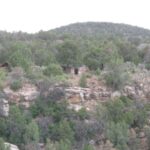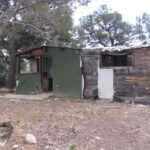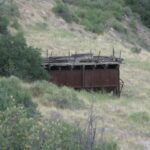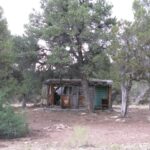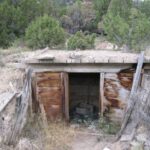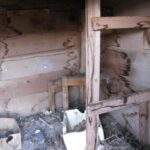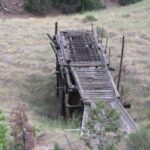Calamity Camp Colorado July 2020 Photos by Will Citta.
If you look closely, you will see a photo of Will. He is the person that submitted these photos. I am a little upset with him as I talked about going to this place several times with him and then he runs off with his girlfriend and does it without me. Also, a view of the road to get there. Not for a flatlander.
Rumor has it that Calamity Mesa, about eight miles southeast of Gateway, got its name when a prospector’s burro ate all his grub, leaving him without food for four days until he could get back to town. There are five rock cabins, a bunkhouse, storage cellars, barn, corrals, and numerous foundations.
Calamity Mesa, outside of Gateway, once had several uranium, vanadium, and radium mines. Calamity Camp, where the miners and their families lived, was active from 1913 to the mid-1960s. It was a community for hundreds of people during the twentieth century. The first radium miners lived a rugged and difficult life. The early miners often gathered to play poker as entertainment without money to gamble with. Mostly they used anything they could find like matchsticks and even rocks. The last group of uranium miners still lived a harsh lifestyle but luxuries like electricity, running water, and regular access to Gateway and Grand Junction were available.
Mining was dangerous work. The men worked with heavy machinery and explosives. Their mines were dug deep underground where the air was bad, and dust was everywhere. The very material they were looking for was radioactive. It wasn’t known at the time, but radioactive material, like uranium, can cause cancer and other health problems. The dangers of working in these mines was not well known until the late 1950’s.
Calamity Camp became a ghost town in the 1960s when the demand for uranium ended. Families left the area looking for new opportunities. While the people that once lived at Calamity Camp have moved on, their stories and evidence of how they lived remain. Sadly, time is taking its toll on Calamity Camp. In 2007, the Grand Junction Field Office of the Bureau of Land Management, the Museum of Western Colorado, and Gateway Canyons Resort started a project to save some of the buildings. New roofs have been placed on some of the stone cabins to help save the stone walls. In 2011 the property was given the honor of being added to the National Register of Historic Places.
Today at the Calamity Camp site, visitors can see the preserved camp buildings and can explore the camp structures. They stand as a reminder of an important part of Western Colorado’s history.
